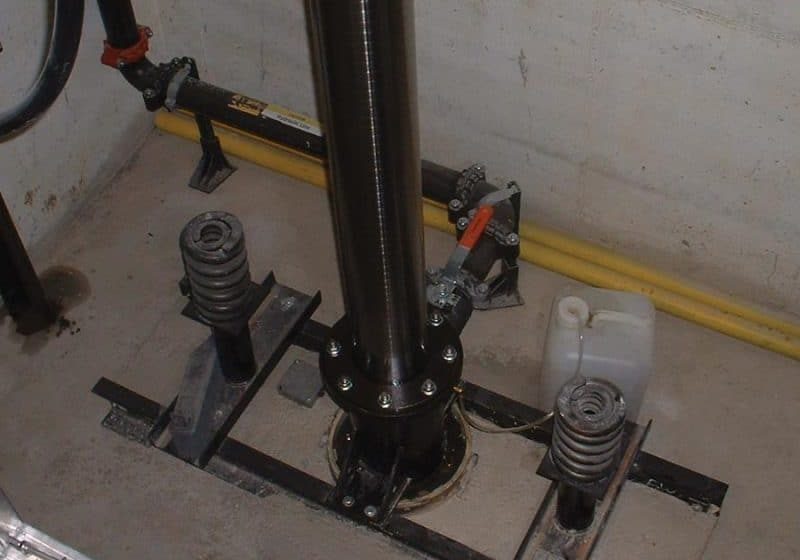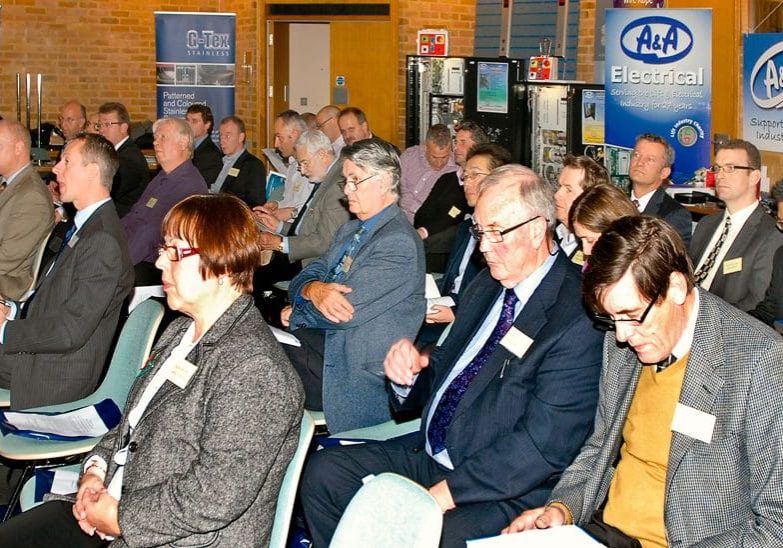by Leonardo Servadio
In the context of Lift 2010 in Milan, Italy (ELEVATOR WORLD, March 2010), the first congress dedicated to the dialogue between the technological and aesthetical aspects of elevators was held. Elevators have acquired a primary importance in new architectural projects, while in Italy, a debate on how to add elevators in ancient monuments has begun.
“In the middle of such a square, will be a tower, built in my way.” Thus wrote Filarete, the first great city planner of the Italian Renaissance, in the middle of the 15th century. He referred to the tower of which the reproduction (by Luca Beltrami at the end of the 19th century, based on the original plans by Filarete) today stands in the middle of the main front of Sforza Castle, the building which, together with the cathedral, marks the gravitational center of Milan. Both the tower and the plan that organizes the historical part of the city have been precisely designed by Filarete.
The quest for the vertical tension toward the sky has been implicit in any architecture since the time of the prehistoric piling, and the most important buildings have been characterized as taller than the others. This is what architect Alberto Salvati recalled in his opening remarks at the congress “L’Ascensore… Come?” (“The Elevator… How?”), which took place at Lift 2010, while displaying the Sforza Castle tower displayed on the cover of the book Trattato di Architettura (Architecture Treaty) by Filarete, recently republished with a significant critical apparatus by Di Baio Editore.
When tall buildings started to be built, the necessity of an instrument to overcome the rise immediately arose, noted the president of the congress and engineer Matteo Volpe, vice-president of IGV Group SpA and publisher of Elevatori, which sponsored the congress together with L’Ascensore (The Lift), also published by Di Baio Editore.
“But today we are here met,” continued Volpe, “because elevators were born as technical instruments, yet now [the need] is increasingly evident to add to them a new aesthetical aspect. The aim of this congress is to find a way of harmony and continuity between the technical and aesthetic aspects.” Salvati held the first presentation precisely for this reason: Salvati has been collaborating with IGV with the aim of bringing the unlimited realm of art within the limited space of the elevator car.
At the Milan furniture fair held in April 2010, Salvati and IGV presented a new series of Domuslift elevators with polychrome artwork drawn with inspiration from children’s drawings and labeled “A Trip in a Magical Garden.” The usage of polychromic drawings on internal surfaces is one of the possible resorts aimed at transforming the car into something beautiful: the key, explained Salvati, “Lays not in the search for market-oriented answers, but in looking for a solution that harmonizes human the soul and sensitivity with technical functionality. . . . Colors cannot be separated from matter. They are matter: as we see stone or wood, I think of the matter “red” or the matter “yellow.” And, through these matters, the elevator car can become [a] magic box.”
Architect Marzorati followed with a presentation of several of his projects, where the spatial relation between elevator and building appeared in the clearest way: this goes for shopping centers, as well as for multiple cinemas, where the elevator has become the central axis of the design:
“Once, the elevators were hidden, close to the pillars: now, in the newest plans, the elevators have become themselves the pillars of the projects. In places like the Multicinema Arcadia in Melzo or in the commercial centers Le Porte Franche in Erbusco (Brescia) or Sarca, between Milan and Sesto S. Giovanni, the elevator structure is something like a transparent pillar that rises in the middle of the space, mediating the different levels and permitting those who enter to immediately appreciate the verticality of the building and allowing those who use the elevators to have a panoramic view all around.”
This is a new concept of the elevator: not only a means to overcome the difference in height, but also an instrument that permits a new “knowledge” and “experience” of the building. In showing the most outstanding elevators published so far, your author pinpointed the elevator installed in 2000 in the middle of the Mole Antonelliana, a huge dome built in Turin in 1863 by architect Antonelli. The Mole, with its 167 meters of height at the top of the mast, remains one of the highest buildings in Italy. The new elevator is totally transparent and rises right in the middle of the structure, running along four steel cables for 88 meters, allowing a panoramic view of the vaults of the dome, which is now a museum.
The issue of adding new elevators in historic buildings has been discussed by architect Francesco P. Chieca of the Milan Board for the Cultural Heritage Conservation, who underlined the problems in putting elevators into historic buildings like ancient churches of castles or museums for accessibility. Chieca said:
“The current laws impose that elevators be placed in such a way that they be totally removable, like provisional works. . . but it would be important to discuss thoroughly how to find a way to build newly planned, permanent structures that are really compatible with the existing ancient buildings.”
Architect and Editor of L’Ascensore Giuseppe Maria Jonghi Lavarini sent a message relayed by Caterina Parrello at the conclusion of the congress that referred to the futurist Sant’Elia, whose projects have been recently published in L’Ascensore. In Sant’Elia’s “Manifesto dell’archtiettura futurista” (“Statement for a Futuristic Architecture”) of 1914, there is a series of drawings of a “futuristic city,” where the elevators are included in ad hoc external structures, thus becoming one of the most evident characteristics of the multistoried buildings, which included gardens in the higher terraces: a “vertical city” concept that was to be actually developed in the second half of that century and now can be brought to full fruition.
The elevator is ever more an occasion that gives an added value to the new projects, not only in terms of comfort, but also in terms of design quality – this is the conclusion of the congress, which is meant to be but the first step in the search for new aesthetics of vertical city spaces.
Get more of Elevator World. Sign up for our free e-newsletter.










